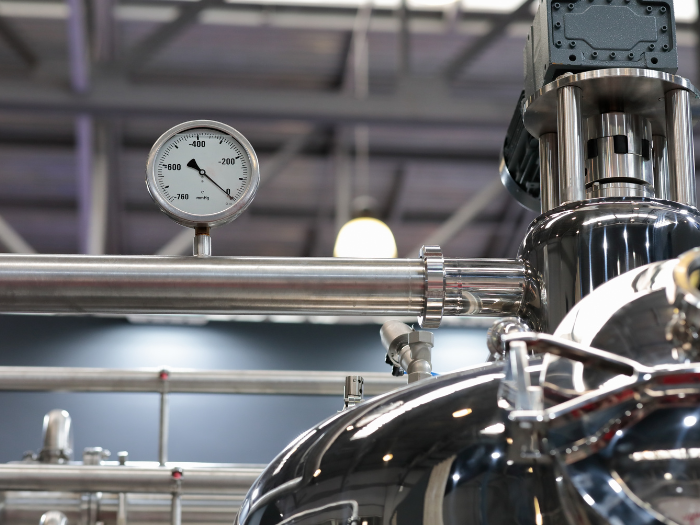
Vacuum Pump vs Recovery Pump for Butane Extraction
Posted by USA Lab on Apr 28th 2025
If you're working with butane extraction – whether for cannabis concentrates, essential oils, or other applications – you’ve likely heard about vacuum pumps and recovery pumps.
While they may seem similar, these two types of pumps serve very different purposes in the extraction process.
What Is a Vacuum Pump?
A vacuum pump creates a low-pressure environment, typically inside a vacuum oven. Its main function is removing air and other gases to facilitate processes like purification, degassing, and solvent evaporation.
Uses in Butane Extraction
- Purging Solvents: The pump creates low pressure to boil off residual solvents safely. Without this step, extracts can fail safety tests and taste harsh.
- Degassing: Removes tiny air bubbles that make concentrates crumbly or uneven. This is why properly purged shatter stays stable longer.
Types of Vacuum Pumps
- Rotary Vane Pumps: The standard choice for most extractors. They’re affordable and effective, but regular oil changes are needed to keep working correctly.
- Diaphragm Pumps: An oil-free option that’s gentler on terpenes. They require less maintenance but don’t pull as strong a vacuum.
What Is a Recovery Pump?
A recovery pump is designed to capture and recycle solvents (like butane or propane) after extraction. Instead of letting the solvent evaporate into the atmosphere, it pulls it back into a storage tank for reuse.
Uses in Butane Extraction
- Solvent Recovery: After butane has been used to strip cannabinoids or terpenes from plant material, the recovery pump pulls the liquid butane back into a tank.
- Cost Efficiency: Reusing butane reduces operational costs since you’re not constantly buying new solvent.
- Environmental & Safety Benefits: Prevents butane from being released into the air, reducing explosion risks and environmental impact.
Differences Between Vacuum Pumps and Recovery Pumps
|
Feature |
Vacuum Pump |
Recovery Pump |
|
Primary Use |
Creates a vacuum for purging/degassing |
Recovers and recycles solvents |
|
Stage of Process |
Post-extraction |
During extraction |
|
Solvent Handling |
Removes residual solvents |
Captures and reuses solvents |
|
Pressure Range |
High vacuum (low pressure) |
Handles both gas and liquid phases |
|
Cost |
Generally less expensive |
More expensive due to complex mechanics |
|
Necessity |
Needed for refinement of final product |
Needed for solvent recycling |
Do You Need Both Pumps for Butane Extraction?
For a complete closed-loop extraction system, you’ll typically need both:
- Recovery Pump: To reclaim butane after the initial extraction.
- Vacuum Pump: To purge residual solvents from the final product.
For example, if you’re working on a small scale for personal use, you might prioritize a vacuum pump for purging. However, commercial operations must use a recovery pump to comply with safety regulations.
How to Choose the Right Pump for Your Needs
Ask yourself these questions before buying:
- Scale: Are you doing small-batch personal extracts or large-scale production? Larger setups usually require both types of pumps.
- Budget: Can you afford both, or do you need to start with one? Choose based on your primary need: purging concentrates or reclaiming solvent.
- Regulations: Does your local law require a closed-loop system? This may mean a recovery pump is non-negotiable.
- End Product: Are you making shatter, wax, or crumble? (Some require deeper vacuums)
- Workflow: Do you plan to reuse your solvent regularly? If so, a recovery pump will pay for itself quickly in reduced butane costs.
Safety Considerations When Using Butane Extraction Pumps

Working with butane extraction requires strict safety protocols. Here’s what to keep in mind:
- Explosion Risks: Butane is highly flammable. Always use pumps in a well-ventilated area away from sparks or open flames.
- Leak Checks: Regularly inspect hoses, fittings, and pumps for leaks using a butane gas detector or soapy water (bubbles indicate leaks).
- Proper Venting: Never vent recovered butane indoors. Use an outdoor-rated recovery tank.
- Static Electricity Prevention: Ground all equipment to avoid static sparks.
Common Mistakes to Avoid
- Using the Wrong Pump Type (e.g., trying to recover butane with a vacuum pump).
- Skipping Maintenance (leading to pump failure or contamination).
- Ignoring Residual Solvents (not purging long enough under vacuum).
- Overloading the System (exceeding pump capacity, causing inefficiency or hazards).
FAQs
Can I use the same pump for both recovery and vacuum purging?
No. Recovery pumps are designed to handle flammable hydrocarbon gases like butane, while vacuum pumps are for creating negative-pressure environments.
What maintenance do these pumps require?
Vacuum pumps need regular oil changes if they’re oil-based, along with occasional filter and seal checks. Recovery pumps require periodic cleaning, leak checks, and lubrication if needed.
How much butane can a recovery pump reclaim?
Depending on the system's efficiency, a good recovery pump can reclaim 90-98% of the butane used. This drastically reduces costs over time.
How long should I purge extracts with a vacuum pump?
Purge times vary based on material thickness, vacuum depth, temperature, and batch sizes.
Why won’t my vacuum hold?
This is likely due to leaks. Check all fittings with a soapy water solution.
Can I purge without a vacuum oven?
It’s possible, but not effective. Solvents won’t fully purge without a vacuum oven, leading to a harsher, less clean product.
Choosing the Right Pump for the Right Job
While vacuum pumps and recovery pumps play essential roles in butane extraction, their functions are distinct and equally important. Whether you’re purging at home or running a full-scale commercial lab, understanding the role of each pump will improve your results, reduce waste, and keep your operation safe.
Looking for top-quality vacuum or recovery pumps? USA Lab Equipment offers a wide selection of professional-grade extraction gear, including pumps, ovens, and accessories.
